ROMANTIC
ART
July 14, 1789 – The capture of the
Bastille came to symbolize French freedom, the end of monarchy and the end of the feudal system. 1789 can be
considered the beginning of a new era of the western world.

The early period of the Romantic Era was a time of war, with
the French
Revolution (1789–1799) followed by the Napoleonic Wars
and the end of the Holy Roman Empire (1806). The wars and the political and social turmoil that went along
with them served as the background for Romanticism. The key generation of French Romantics were born between
1795–1805.
The Romantic period was a revolt against the aristocratic social
and political norms of the Age of
Enlightenment and a reaction against the Industrial
Revolution and the scientific rationalization of nature. Romantics were distrustful of the human world,
and tended to believe that a close connection with nature was mentally and morally healthy. Romantic art
addressed its audiences directly and personally with what was intended to be felt as the personal voice of the
artist. Romanticism placed an emphasis on nature, especially when aiming to portray the power and beauty of the
natural world, and emotions, and sought a highly personal approach to art. Romantic art was about individual
feelings.
Exotic wild nature began to appeal to many in an age dominated by
the belief in science and order. Edmund Burke’s writings are among the first to elucidate this appeal
(1787). Many Romantic ideas came from Jean-Jacques
Rousseau who championed the rights of the
individual.
JACQUES-LOUIS DAVID
David was an influential French painter in the Neoclassical style and
Romantic movements. David lived in the final years of the Ancien
Regime and became an active supporter of the French Revolution and
friend of political radical Robespierre.
“Socrates at the Moment of Grasping the
Hemlock” (1787)
Oil on Canvas (Metropolitan Museum of Art, New York)
Scene depicting the story of the execution of Socrates, as told
by Plato in his Phaedo. Socrates
has been convicted of corrupting the youth of Athens and introducing strange gods, and has been sentenced to
die by drinking poison hemlock. Rejecting the opportunity to flee, Socrates uses his death as a final
lesson for his pupils, and faces it calmly.
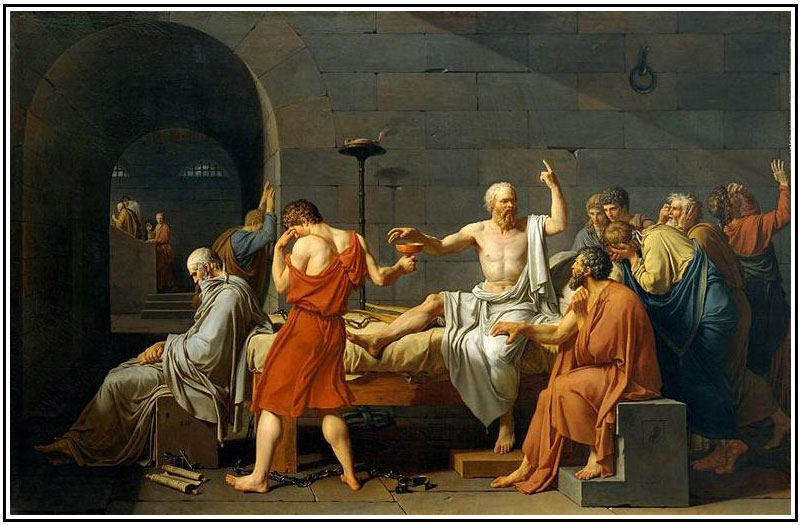
“Napoleon Crossing the
Alps” (1801)
Oil on Canvas (Chateau de Maimaison,
Rueil-Malmaison)
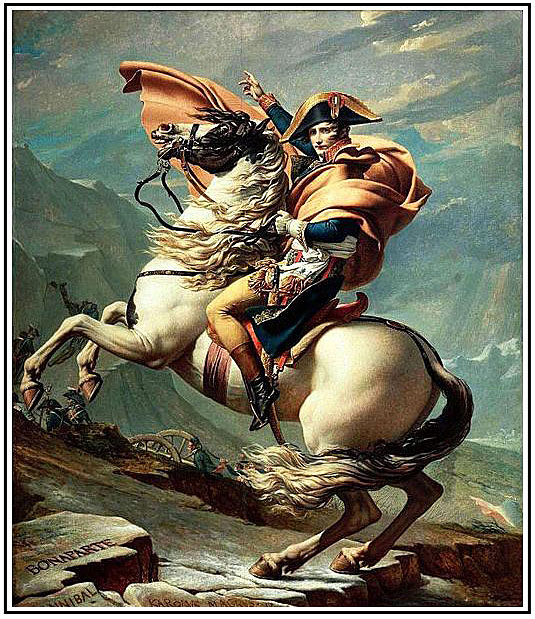
ANTOINE-JEAN
GROS (1771-1835)
French history and neoclassical painter. Pupil of David.
“Bonaparte Visits the Plague
Stricken in Jaffa” (1804)
Oil on Canvas (Louvre, Paris)
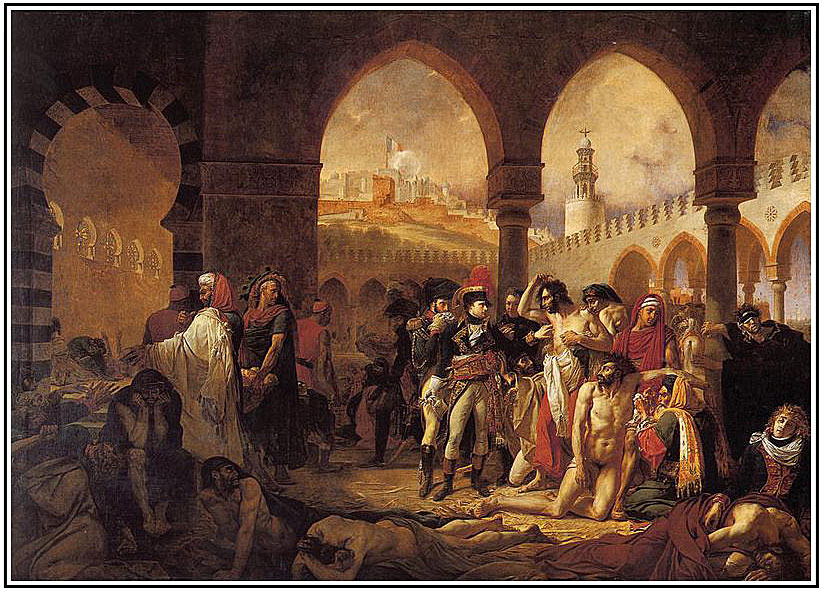
THEODORE
GERICAULT (1791-
French artist and one of the pioneers of the Romantic movement.
Unconventional lifestyle; self-taught artist.
“The Raft of
the Madusa” (1819)
Oil on Canvas (Louvre, Paris)
Gericault’s masterpiece. Completed at the age of 27. Painting is considered an icon
of French Romanticism. Painting depicts the aftermath of the wreck of the French naval frigate ‘Meduse’ which
ran aground.
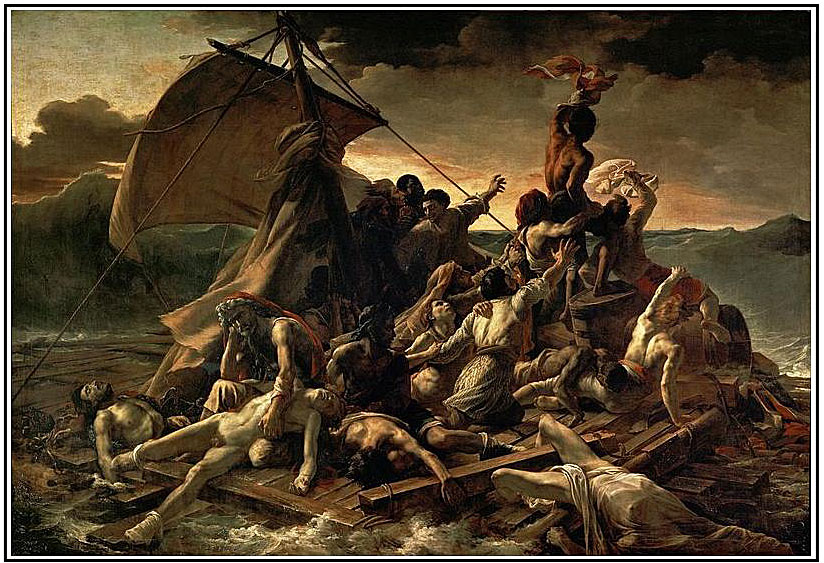
EUGENE
DELACROIX (1798-1863)
Regarded as the leader of the French Romantic school.
Characteristics: expressive brushstrokes, study of the optical effects of color, passion for the
exotic.
“The Barque
of Dante” (1822)
Oil on Canvas (Louvre, Paris)
Sometimes known as “Dante and Virgil in Hell”. First major painting of
Delacroix. Signals a shift in the character of narrative painting from Neo-Classicism towards the Romantic
movement.

“The Massacre
of Chios” (1824)
Oil on Canvas (Louvre, Paris)
Scene depicts the Ottoman military attack on the inhabitants of the Greek island of
Chios (1822).

“The Death of
Sardnapolis” (1827)
Oil on Canvas (Louvre, Paris)
Faced with military defeat, Sardanapalus, the alleged last king of Assyria, ordered
his possessions destroyed and concubines murdered before immolating himself.

“Liberty Leading the
People” (1830)
Oil on Canvas (Louvre, Paris)
Delacroix’s painting commemorates the July Revolution of 1830 which toppled King
Charles X of France. A woman (“Marianne”) personifying Liberty leads the people forward over the bodies of
the fallen, holding the flag of the French Revolution (still France’s flag today).

FRANCISCO DE
GOYA (1746-1828)
Spanish portrait artist and court painter to the Spanish Crown. Regarded both
as the last of the Old Masters (roughly before 1800) and the first of the moderns – “the last great painter in
whose art thought and observation were balanced and combined to form a faultless unity".
“Sleep of
Reason Produces Monsters” (c. 1799)
Etching, Aquatint
The artist’s nightmare reflected his view of Spanish society, which he portrayed in
the Los Caprichos as demented, corrupt, and ripe for ridicule.
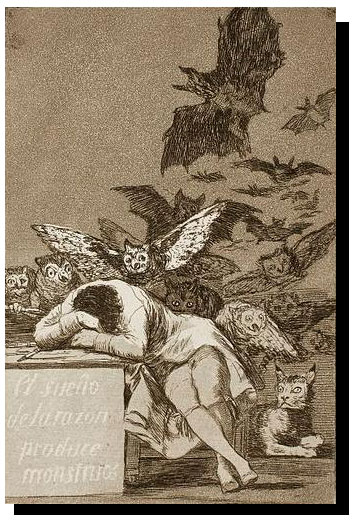
“Charles IV
of Spain and His Family” (1800)
Oil on Canvas (Museo del Prado, Madrid)
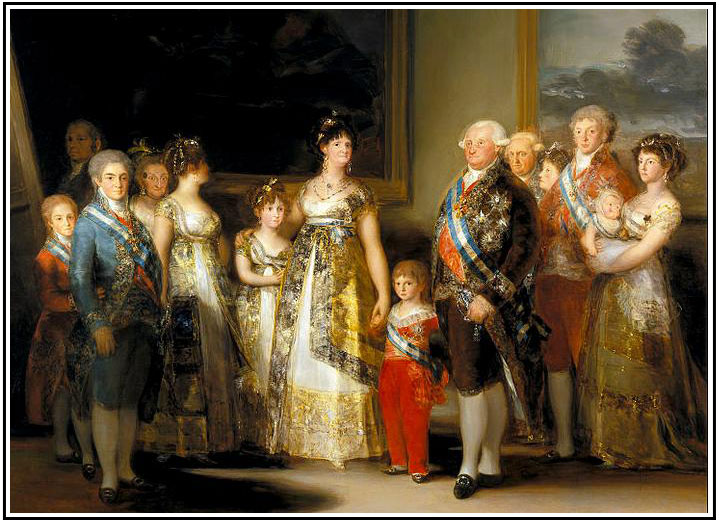
“The Third of
May 1808” (1814)
Oil on Canvas (Museo del Prado, Madrid)
Painting depicts the Spanish resistance to Napoleon’s armies during the occupation of
1808 in the Peninsular War.
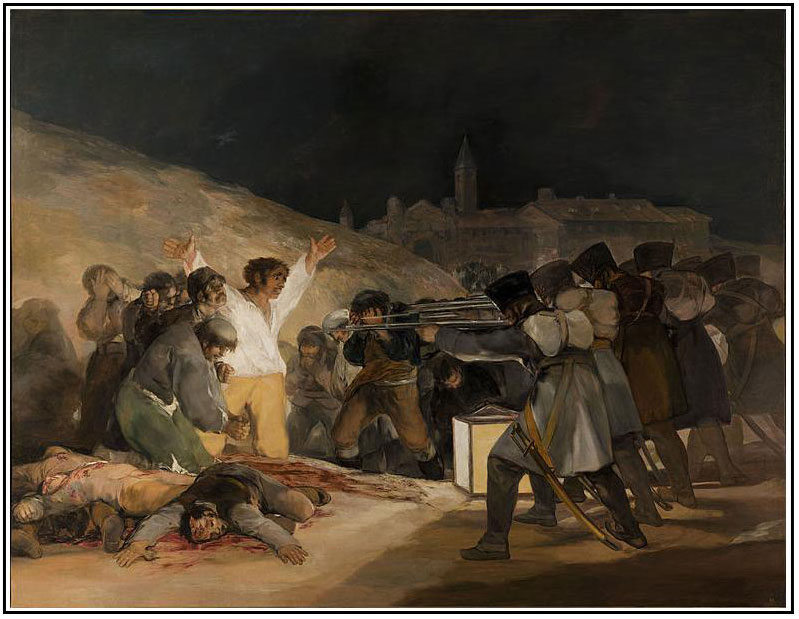
Landscape
Paintings
England was largely devoid of the civil strife and political
upheavals as seen in France and Spain. The period known as Pax Britannica - "British Peace" – flourished from
around 1815 to 1914 (WWI). Significant paintings were largely landscapes rather than history
paintings.
JOHN
CONSTABLE (1776-1837)
English Romantic painter. Principally known for landscape paintings of Dedham
Vale, the area surrounding his home.
“Boat-Building near Flatford Mill”
(1815)
Oil on Canvas
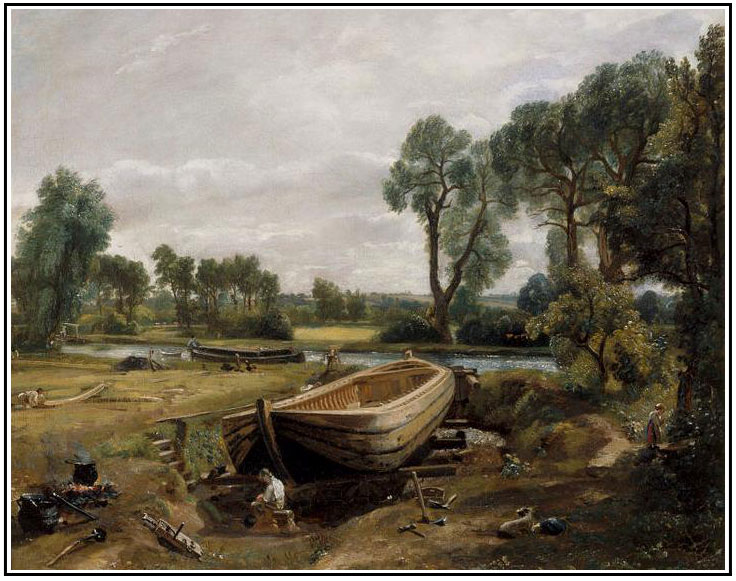
“The Hay
Wain” (1821)
Oil on Canvas (National Gallery, London)
Depicts a rural scene on the River Stour. Regarded as “Constable’s most famous
image.
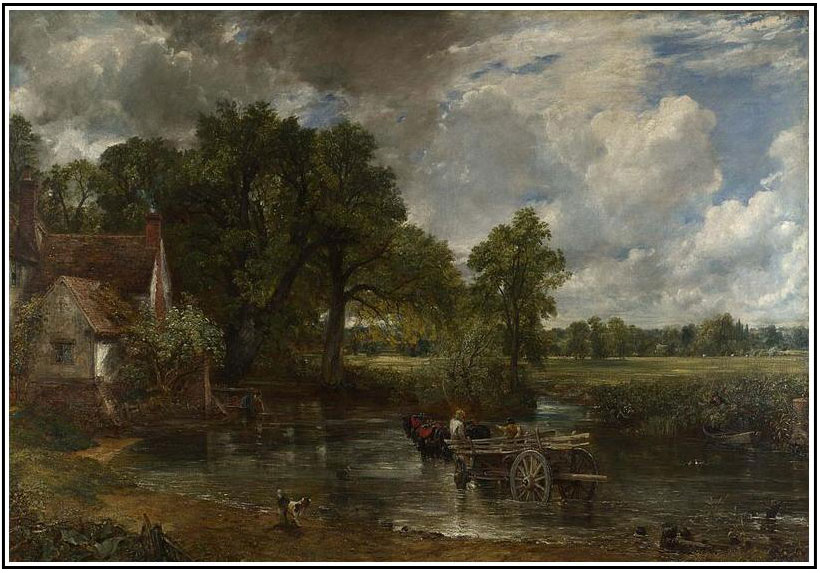
JOSEPH MALLORD WILLIAM TURNER
(1775-1851)
Known as J.M.W. Turner. English Romantic landscape painter and water-colorist.
Began with watercolors then turned to oils. Subjects: the forces of nature. Painted quickly; sometimes uses
his fingers. Great skill in expressing his experience. Known as “the painter of light”. Turner’s
work is regarded as the Romantic preface to Impressionism and even Abstract
Art.
“The Fighting
Temeraire tugged to her last Berth to be broken up, 1838” (1839)
Oil on Canvas (National Gallery, London)
Scene depicts the Temeraire being towed by a paddle-wheel steam tug
to be broken up for scrap. The Temeraire was the last of the British “ship of the line” sail propulsion
warships. She played a distinguished role in the Battle of Trafalgar in 1805.
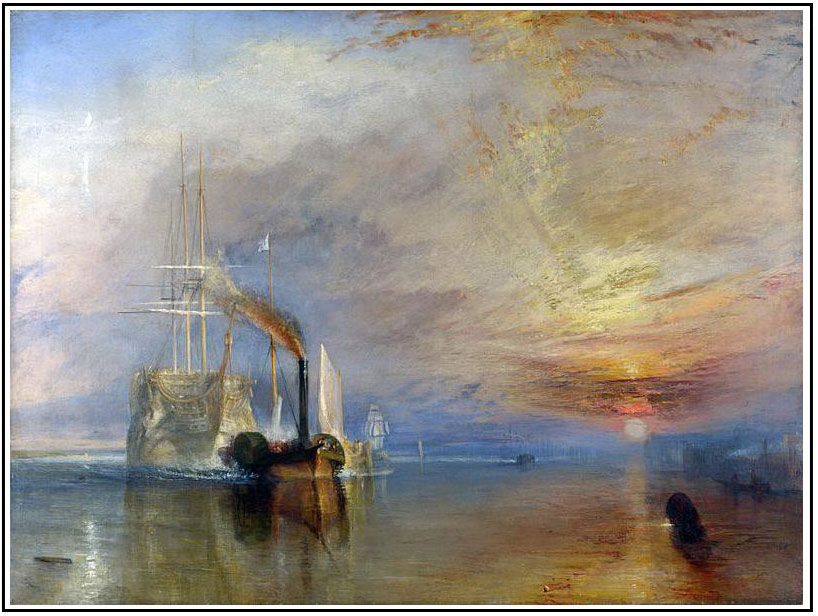
“The Slave
Ship” (1840)
Oil on Canvas (Museum of Fine Arts, Boston)
Turner was inspired to paint “The Slave Ship” after reading
The History and Abolition of the Slave Trade (Thomas Clarkson). In 1781, the captain of the slave ship Zong ordered 133
slaves to be thrown overboard so that insurance payments could be collected. It is speculated that
Turner’s painting played a part in the passing of an 1843 law in which the British Empire pledged to more
effectively suppress slavery and the salve trade.
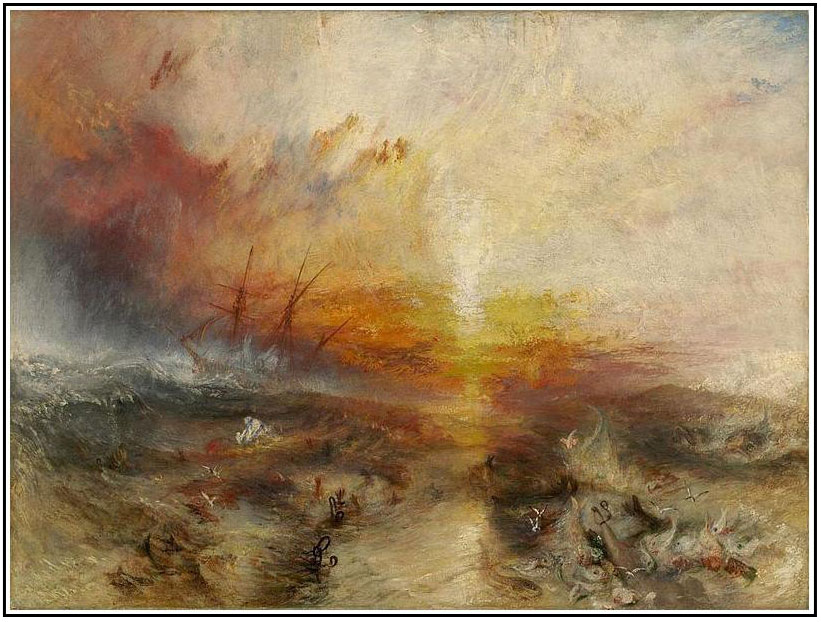
“Snow Storm –
Steam Boat off a Harbor’s Mouth Making Signals in Shallow Water” (1842)
Oil on Canvas (Tate, London)
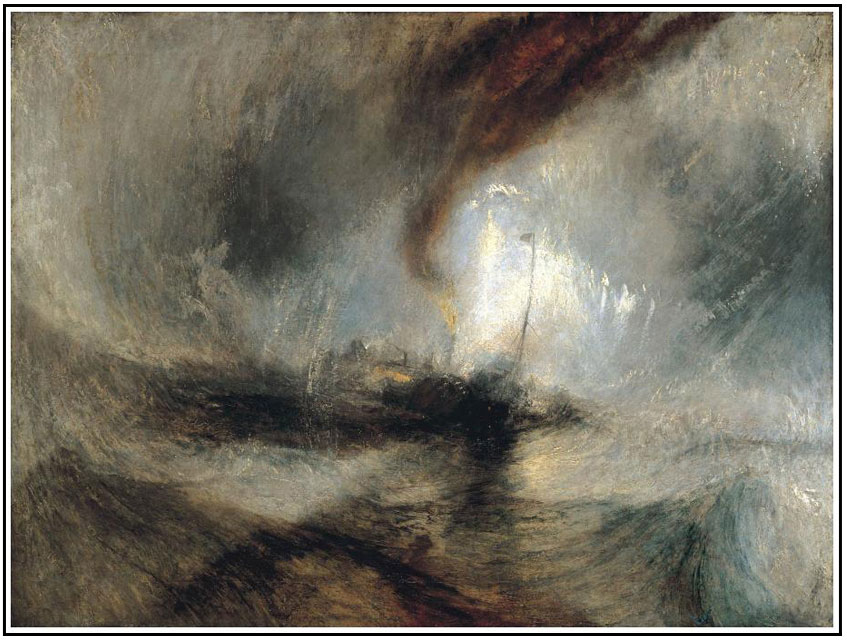
“Rain, Steam
and Speed – The Great Western Railway” (1844)
Oil on Canvas (National Gallery, London)
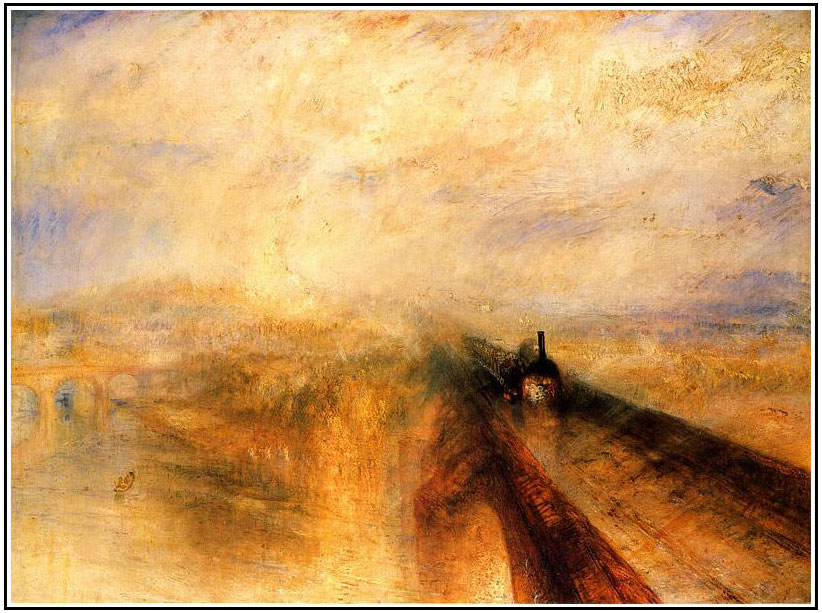
CASPAR DAVID
FRIEDRICH (1774-1840)
German Romantic landscape artist. Best known for allegorical landscapes.
Characteristics: contemplative figures silhouetted against night skies, morning mists, barren trees or Gothic
ruins. Friedrich came of age during a transitory period: disillusionment with a materialistic society to that
of a new appreciation of spirituality. Friedrich saw himself as a mediator between nature and
humanity.
The importance the Romantics placed on untrammelled feeling is summed up in the
remark of Friedrich: "the artist's feeling is his law".
“Monk by the
Sea” (1810)
Oil on Canvas (Alte Nationalgalerie, Berlin)
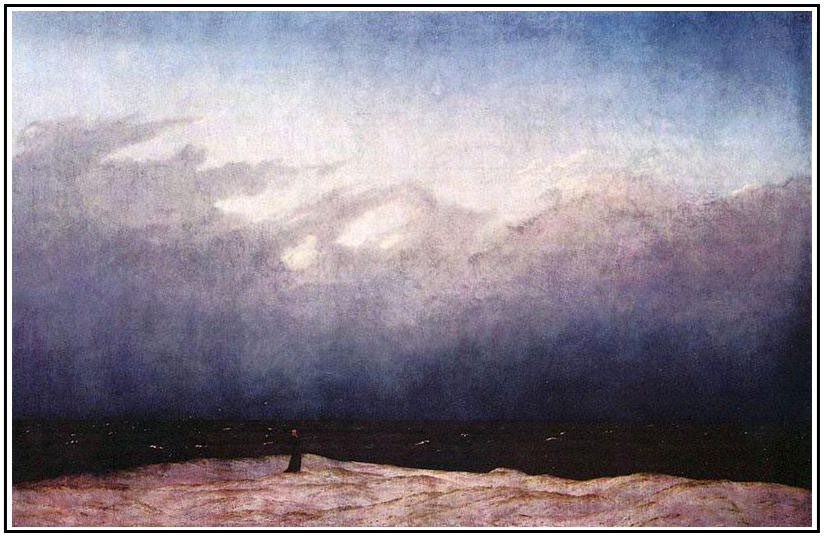
“Wanderer
above the Sea of Fog” (1818)
Oil on Canvas (Kunsthalle Hamburg)
Well-known Romantic masterpiece. An iconic painting that’s often used to
instill the spirit of the Romantic movement.
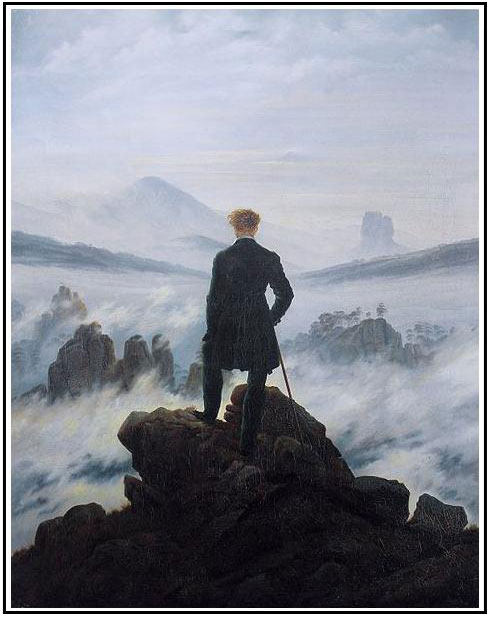
“Chalk Cliffs
on Rugen” (1818)
Oil on Canvas (Museum Oskar Reinhart am Stadtgarten,
Winterthur)

“The Sea of
Ice” (1824)
Oil on Canvas (Kunsthalle Hamburg)
Depiction of the fate of ship that took part in William Edward Parry’s expedition to
the North Pole (1819-1824).
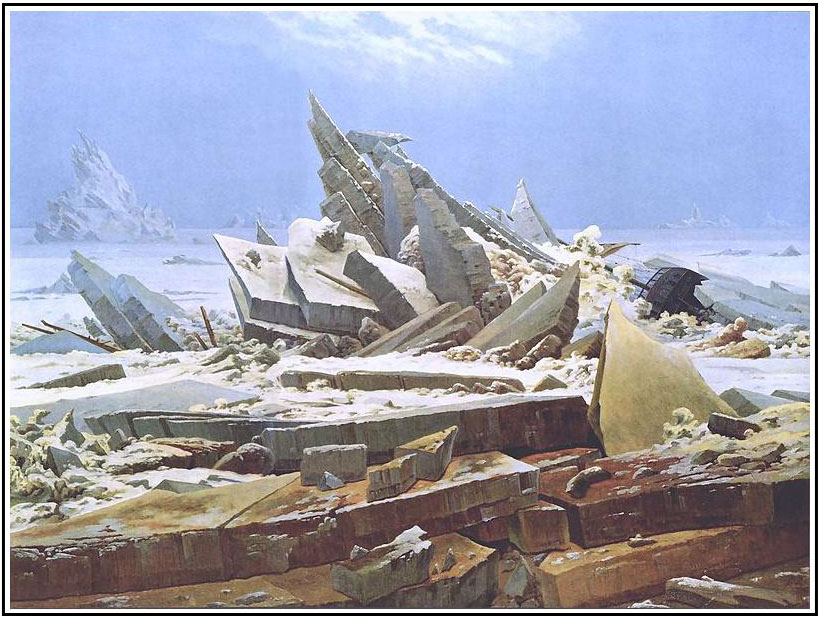
z
| 




















